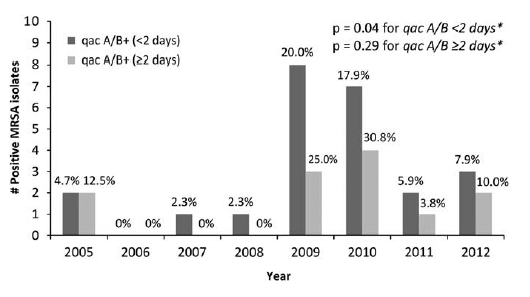Preventing Catheter-Associated Urinary Tract Infection in Acute Care
 |
| Dr. Mohamad Fakih |
Catheter-associated urinary tract infection (CAUTI) – sometimes jokingly referred to as the “Rodney Dangerfield” of healthcare-associated infections – finally got respect in 2008 when the Centers for Medicare & Medicaid Services stopped reimbursing for these events if associated with a hospitalization. Since then, hospitals have attempted to decrease their CAUTI rates, with this work taking on more urgency now that CAUTI is publicly reported and associated with a reduction in compensation through value-based purchasing.
CAUTI, however, presents not only a financial risk to hospitals, but a substantial safety risk to patients, especially with prolonged – and often unnecessary -- use of the catheter. The “On the CUSP Stop CAUTI” initiative attempted to implement best practices to reduce CAUTI in hospitals across the United States. The program was modeled after a successful statewide initiative in Michigan that found a 25% reduction in catheter use and CAUTI, and included a qualitative assessment to better understand the socio-adaptive aspects of CAUTI prevention. The national program focused on sharing best practices to reduce urinary catheter risk, and helping healthcare workers change their behavior to adopt measures that reduce CAUTI. This effort, sponsored by the Agency for Healthcare Research and Quality (AHRQ), included a collaboration of professional societies, academic researchers, government agencies -- including the CDC -- and state hospital associations. The program was led by the Health Research and Educational Trust with the support of faculty from the University of Michigan, St. John Hospital and Medical Center, the MHA Keystone Center, and Johns Hopkins Medicine Armstrong Institute for Patient Safety and Quality.
The newly published NEJM article presents the results of the first 4 (of 9) cohorts that participated in the initiative, and encompasses 926 units in 603 hospitals across 32 states, the District of Columbia, and Puerto Rico. These results showed a 32% reduction in CAUTI in the non-intensive care units (ICUs), but no change in ICUs. In addition, a 7% reduction in catheter use was seen in non-ICUs. Early in the work, we evaluated the indications for catheter use and found marked differences between the ICU and non-ICU. Catheter use was reported to be indicated ~ 94% of the time in the ICUs compared to ~65% for the non-ICUs. In addition, the primary indication for using the catheter in the ICU was for fluid monitoring in the critically ill. The newly released Ann Arbor criteria for urinary catheter use may help better clarify the appropriate indications in critically ill patients.
The main elements of the initiative that helped to produce these results were to:
1) integrate evaluation for catheter use as part of healthcare worker’s daily routine, particularly nurses
2) avoid catheter use by considering alternative urine collection methods
3) ensure that aseptic practices are used when inserting and maintaining the catheter such as hand hygiene.
Additional elements included regular feedback on performance related to catheter use and CAUTI events. Identified gaps were addressed and mitigated. A key component was ensuring adoption of best practices and buy-in from different stakeholders. This was achieved by addressing catheter harm for specific stakeholders, ensuring leadership support of the essential disciplines, underscoring the collaborative nature of CAUTI prevention, and identifying champions within the organization to lead the effort.
The “On the CUSP Stop CAUTI” initiative demonstrates that scaling up complex interventions --with technical and socio-adaptive components -- to a national level is achievable at least in non-ICUs. CAUTI is certainly not a “sexy” healthcare-associated condition but how a hospital addresses CAUTI likely says much about how such a facility attacks other endemic and mundane harms such as falls, delirium and pressure sores. We are currently extending our CAUTI prevention program to long-term care and to those hospital units – both ICU and non-ICU – that have persistently elevated CAUTI rates. We hope to share those results soon.



Comments
Post a Comment
Thanks for submitting your comment to the Controversies blog. To reduce spam, all comments will be reviewed by the blog moderator prior to publishing. However, all legitimate comments will be published, whether they agree with or oppose the content of the post.